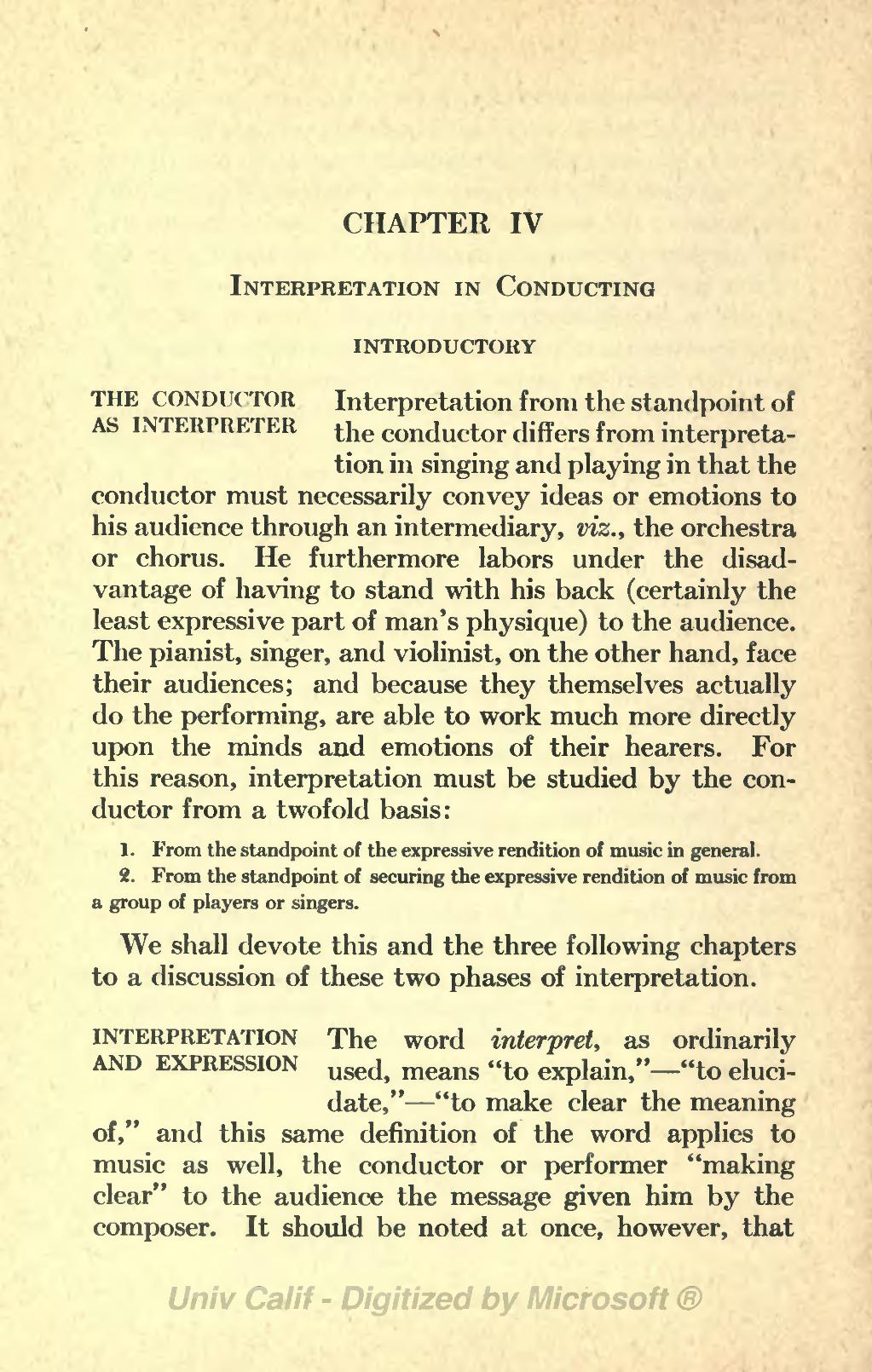CHAPTER IV
INTERPRETATION IN CONDUCTING
INTRODUCTORY
THE CONDUCTOR AS INTERPRETER Interpretation from the standpoint of the conductor differs from interpretation in singing and playing in that the conductor must necessarily convey ideas or emotions to his audience through an intermediary, viz., the orchestra or chorus. He furthermore labors under the disadvantage of having to stand with his back (certainly the least expressive part of man's physique) to the audience. The pianist, singer, and violinist, on the other hand, face their audiences; and because they themselves actually do the performing, are able to work much more directly upon the minds and emotions of their hearers. For this reason, interpretation must be studied by the conductor from a twofold basis:
1. From the standpoint of the expressive rendition of music in general.
2. From the standpoint of securing the expressive rendition of music from a group of players or singers.
We shall devote this and the three following chapters to a discussion of these two phases of interpretation.
INTERPRETATION AND EXPRESSIONThe word interpret, as ordinarily used, means to explain,"—"to elucidate,"—"to make clear the meaning of," and this same definition of the word applies to music as well, the conductor or performer "making clear" to the audience the message given him by the composer. It should be noted at once, however, that
